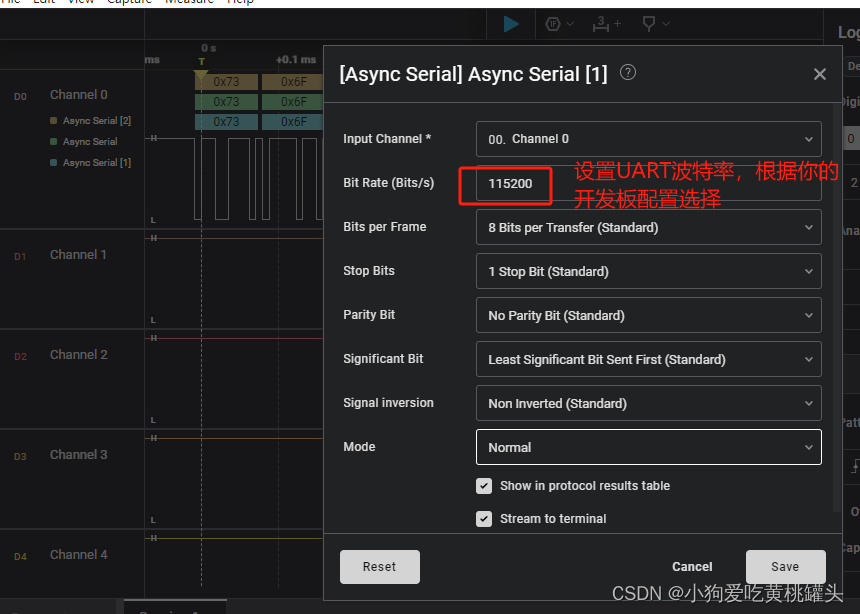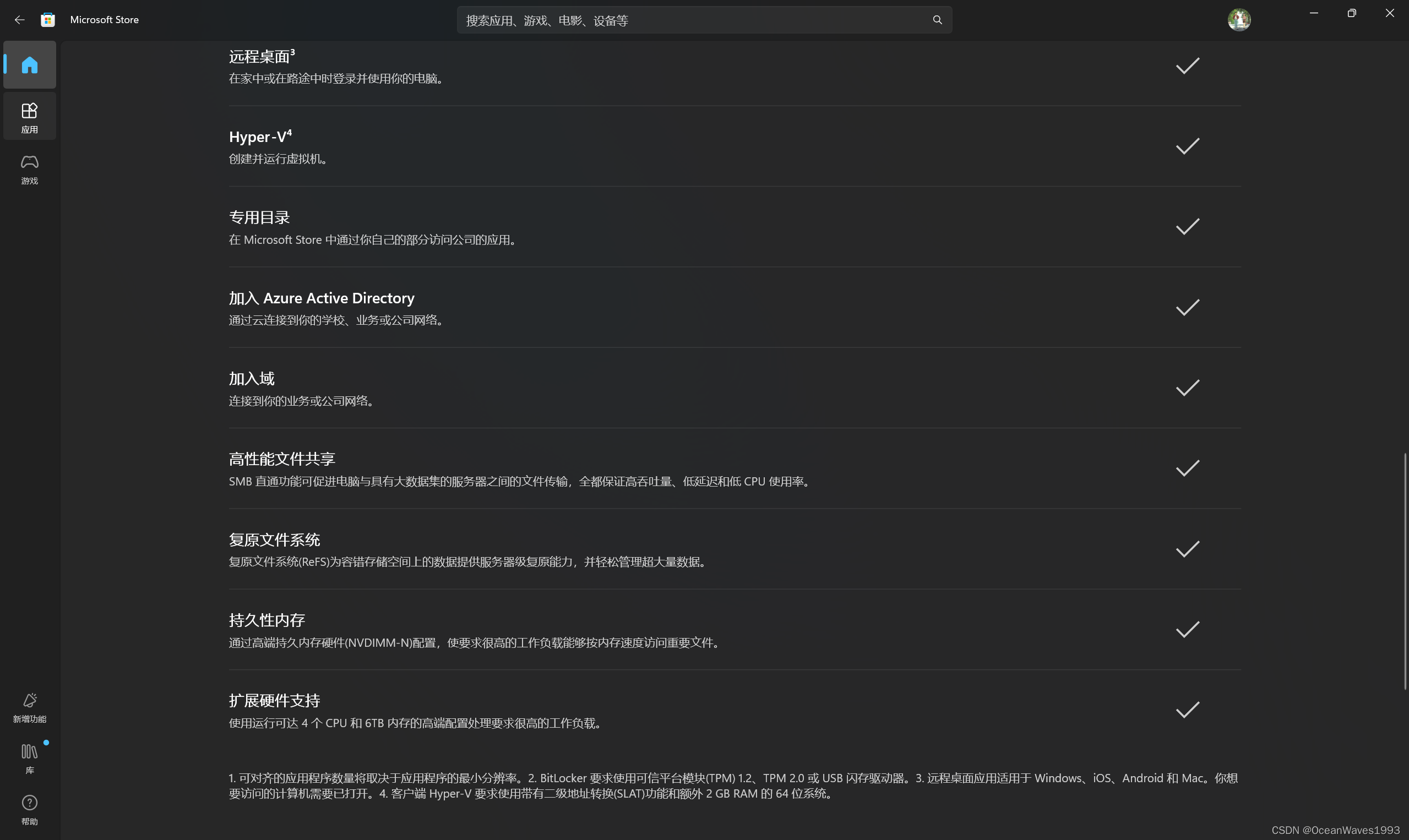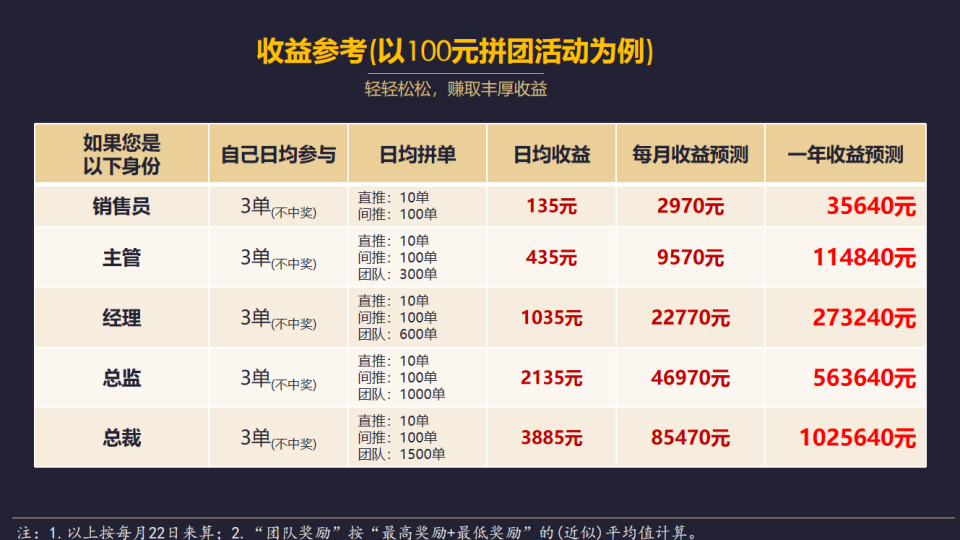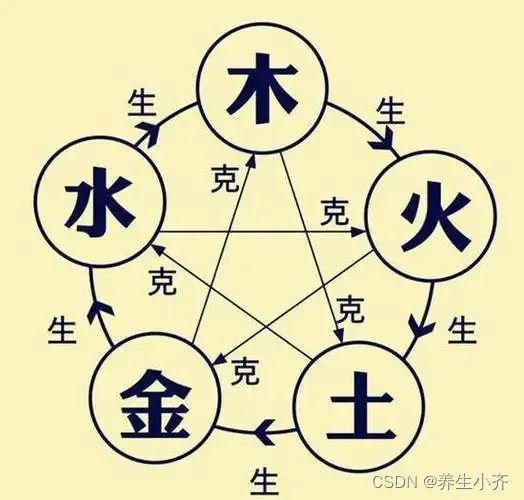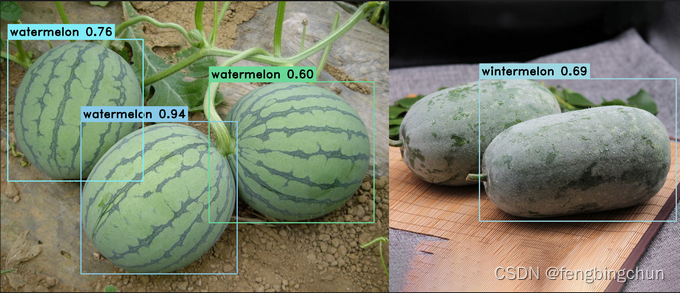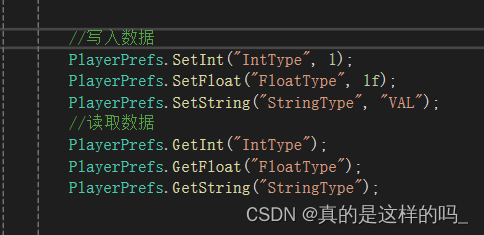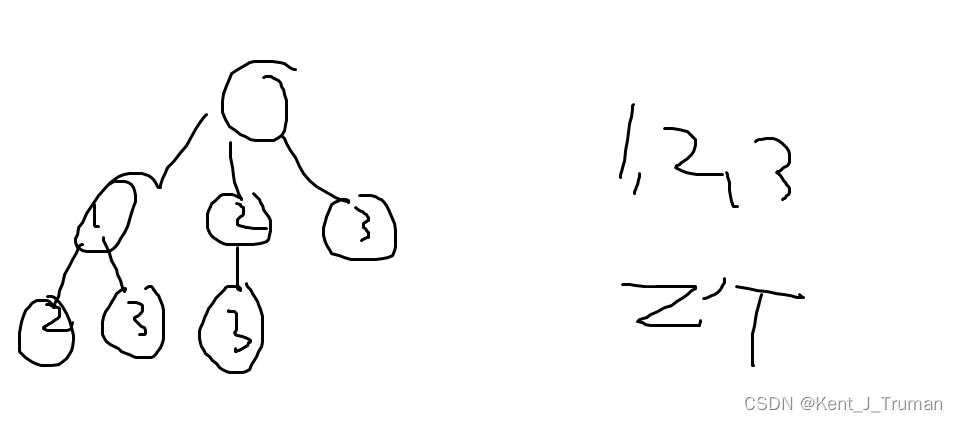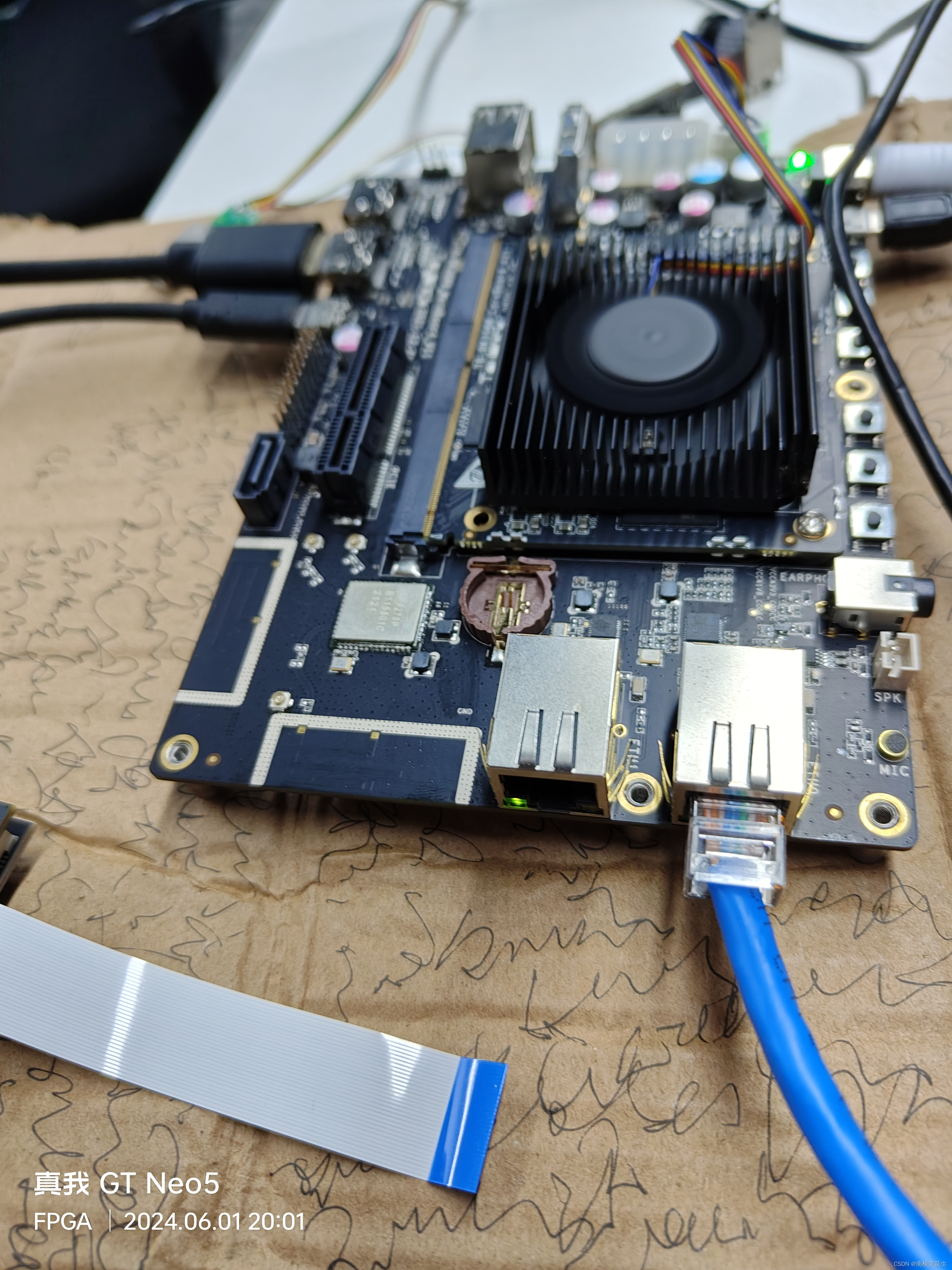Linux input
更多内容可以查看我的github
Linux输入子系统框架
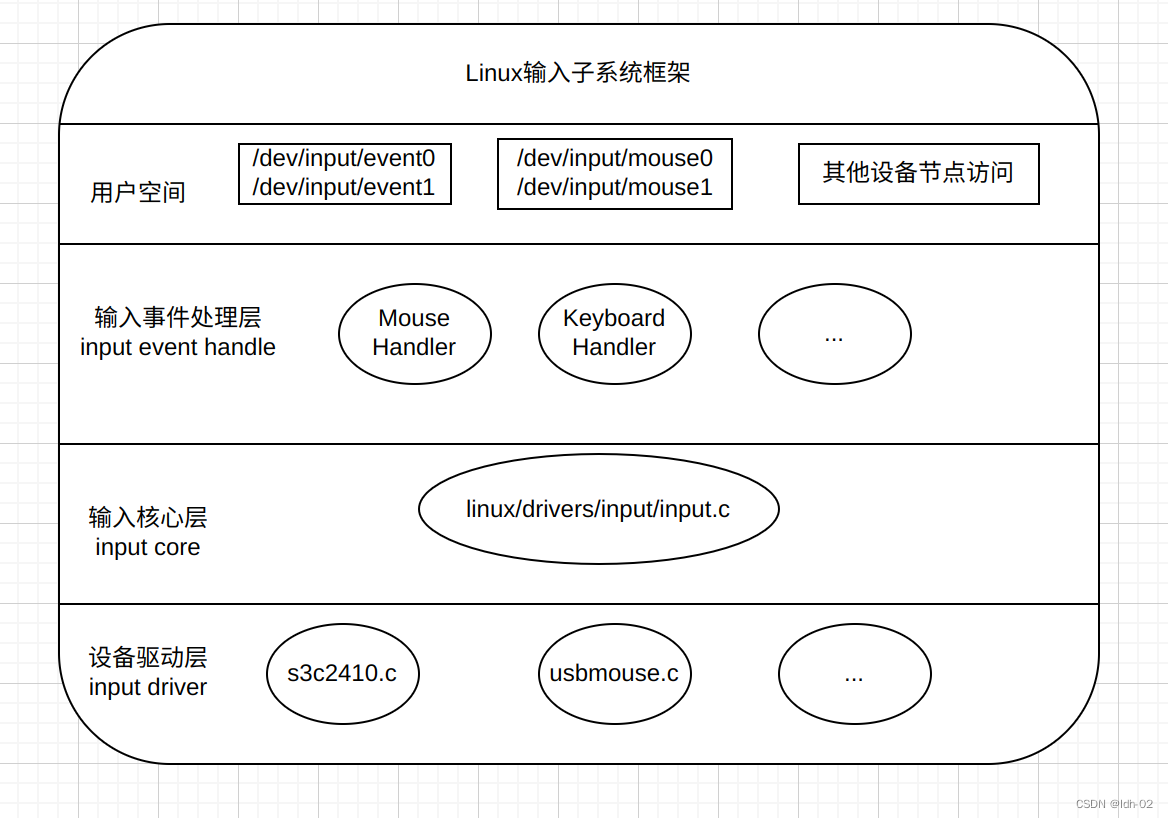 Linux输入子系统由驱动层、核心层、事件处理层三部分组成。
Linux输入子系统由驱动层、核心层、事件处理层三部分组成。
- 驱动层:输入设备的具体驱动程序,负责与具体的硬件设备进行交互,并将底层的硬件输入转化为统一的事件形式,向核心层发送
- 核心层:连接驱动层和事件处理层,负责对下层提供驱动层借口,向上层提供事件处理接口
- 事件处理层:负责对输入事件进行处理,并将处理结果传递给应用程序
- 层的设备抽象出对应的接口提供给应用层。将底层设备的触发的事件通过这个接口传达给应用层。
核心层的代码在 linux/drivers/input/input.c 中实现
重要结构体
input_dev
这个结构体属于驱动层,描述了一个具体的input设备,记录相关的硬件信息,事件位图等,
struct input_dev {
const char *name; // 设备名称
struct input_id id; // 设备id,存储输入设备的总线、厂商等信息
...
unsigned long evbit[BITS_TO_LONGS(EV_CNT)]; // 支持事件类型
unsigned long keybit[BITS_TO_LONGS(KEY_CNT)]; // 按键位图
unsigned long relbit[BITS_TO_LONGS(REL_CNT)]; // 相对位移位图
...
struct list_head h_list; // 内核链表头
struct list_head node; // 内核链表节点
};
Linux设备支持的事件类型:
| 事件类型 | 编码 | 事件描述 |
|---|---|---|
| EV_SYN | 0x00 | 同步事件 |
| EV_KEY | 0x01 | 按键事件(鼠标,键盘等) |
| EV_REL | 0x02 | 相对坐标(如:鼠标移动,报告相对最后一次位置的偏移) |
| EV_ABS | 0x03 | 绝对坐标(如:触摸屏或操作杆,报告绝对的坐标位置) |
| EV_MSC | 0x04 | 其它 |
| EV_SW | x05 | 开关 |
| EV_LED | 0x11 | 按键/设备灯 |
| EV_SND | 0x12 | 声音/警报 |
| EV_REP | 0x14 | 重复 |
| EV_FF | x15 | 力反馈 |
| EV_PWR | 0x16 | 电源 |
| EV_FF_STATUS | 0x17 | 力反馈状态 |
| EV_MAX | 0x1f | 事件类型最大个数和提供位掩码支持 |
input_handler
这个结构体属于事件处理层,描述一个事件处理器
struct input_handler {
void *private;
// 事件处理函数
void (*event)(struct input_handle *handle, unsigned int type, unsigned int code, int value);
void (*events)(struct input_handle *handle,
const struct input_value *vals, unsigned int count);
bool (*filter)(struct input_handle *handle, unsigned int type, unsigned int code, int value);
// 设备匹配函数
bool (*match)(struct input_handler *handler, struct input_dev *dev);
// 设备连接函数,匹配成功后连接
int (*connect)(struct input_handler *handler, struct input_dev *dev, const struct input_device_id *id);
void (*disconnect)(struct input_handle *handle);
void (*start)(struct input_handle *handle);
bool legacy_minors;
int minor;
const char *name;
// 设备支持列表
const struct input_device_id *id_table;
struct list_head h_list;
struct list_head node;
};
input_handle
这个结构体属于核心层,描述一个配对的input设备和input设备处理器
struct input_handle {
void *private;
int open; // 打开标志
const char *name; // 名称
struct input_dev *dev;
struct input_handler *handler;
struct list_head d_node;
struct list_head h_node;
};
input_handle_list
struct input_handle_list {
struct list_head list;
struct input_handle *first;
struct input_handle *last;
};
两条重要链表
在 input.c 中,全局维护了两条重要的链表,分别是输入设备链表和事件处理器链表
static LIST_HEAD(input_dev_list);
static LIST_HEAD(input_handler_list);
总结
上面结构体的链表的关系如下面两图所示(这个图好难画-.-,就在网上找了一个,原文连接)
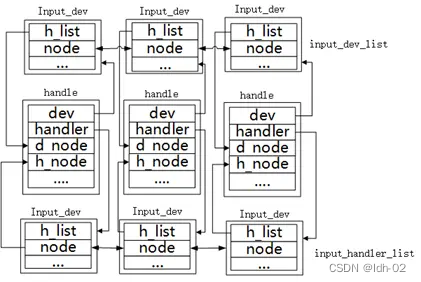

当我们使用input_register_device()注册一个设备的时候,就会将设备添加到input_dev_list链表中,同时便利input_handler_list进行匹配,匹配成功就会调用input_handler->connect()函数进行连接
事件相关结构体
input_event
事件的输入就是以一个input_event为基本单位的
struct input_event {
struct timeval time; /* 事件发生的时间 */
__u16 type; /* 事件总类型 */
__u16 code; /* 事件子类型 */
__s32 value; /* 事件的值 */
};
evdev_client
struct evdev_client {
unsigned int head;
unsigned int tail;
unsigned int packet_head; /* [future] position of the first element of next packet */
spinlock_t buffer_lock; /* protects access to buffer, head and tail */
struct fasync_struct *fasync;
struct evdev *evdev;
struct list_head node;
int clk_type;
bool revoked;
unsigned int bufsize;
struct input_event buffer[];
};
- head:表示客户端缓冲区中下一个要读取的事件的索引。当客户端从缓冲区读取事件时,它会从 buffer[head] 开始读取,并递增 head 的值。因此,head 指向的是最老的未读取事件的位置。
- tail:表示客户端缓冲区中下一个要写入的事件的索引。当输入事件到达并需要被缓冲时,它将被写入到 buffer[tail] 的位置,并递增 tail 的值。因此,tail 指向的是最新的未写入事件的位置。
实际上,evdev_client 实现了一个环形队列,head是头指针,tail是尾指针,这两个指针都是以 input_event 为单位移动的。
packet_head 与 head 和 tail 不同, 它以数据包(多个input_event)为单位,主要负责记录缓冲区的入口偏移量。
buffer 就是循环队列数组,即缓冲区
所以,根据这些变量我们可以知道,当循环队列满的时候,head = tail;当循环队列空的时候,packet_head = tail。
evdev
struct evdev {
int open; // 设备打开计数
struct input_handle handle;
wait_queue_head_t wait; // 等待队列,没有事件时进程睡眠
struct evdev_client __rcu *grab; // 事件响应
// 客户端链表,可以有多个进程访问设备
struct list_head client_list;
spinlock_t client_lock; /* protects client_list */
struct mutex mutex;
struct device dev;
struct cdev cdev;
bool exist;
};
总结
- input_event: 表示一个输入事件
- evdev_client: 表示一个用户空间的应用程序或实体设备与输入设备之间的连接
- evdev: 输入设备驱动程序的接口实现,应用程序可以通过evdev与evdev_client之间的交互,实现输入事件的读取和输入
流程
这部分建议阅读源码
在输入设备驱动(input_dev)中,一般通过轮询或者中断方式获取事件的原始值,经过一些处理后,通过input_event()函数将数据上报给核心层(input_core)。
在核心层中,通过input_handle_event()和input_pass_values()对数据进行处理(type、code、value),然后使用input_to_handler()函数将数据上报给事件处理层(input_handler),在input_to_handler()中,使用input_handler结构体中的事件处理函数(event、events、filter)上报,这些函数可以在evdev.c的1235行的evdev_handler中找到。
在事件处理层中,通过evdev_events()和evdev_pass_values()为事件加上时间戳,完成了一个完整的input_event,然后使用__pass_event()将事件传递给用户空间(evdev_client的buffer中)
在__pass_event()中,事件input_event会被填充到evdev_client的buffer中。对于用于空间的应用程序,可以通过read()函数调用内核空间的evdev_read()函数,然后调用evdev_fetch_next_event()函数从环形缓冲区中读取input_event事件
